So, you’re playing volleyball one night, and right before the other team serves, the setter looks at you and makes a “money, money” gesture. “What the heck was that?”, you wonder. Next thing you know, the set that you thought was going to be a metre high in the middle is actually coming at you a lot faster. And, since you weren’t ready, you totally miss it. Turns out, the setter was calling a quick set for you. Oops.
Once players have mastered the basic skills of volleyball, and they have more control over the ball, teams can start to run offensive plays. This means that the players start to identify more sophisticated ways to hit the ball, with the purpose being to try to trick the other team’s defense to have a better chance of scoring a point.
Offense vs Defense
Before going into the different types of plays, it’s important to distinguish what we mean by offense and defense in volleyball. For every play, one team is playing offense and the other is playing defense. This switches multiple times during each rally, and it switches FAST.
Basically, when a team is playing offense, they are actively trying to score a point. When a team is playing defense, they are trying to prevent the other team from scoring that point. The easiest way to think about this is a spike versus a block. The team that is spiking is playing offense, while the team that is blocking is playing defense.
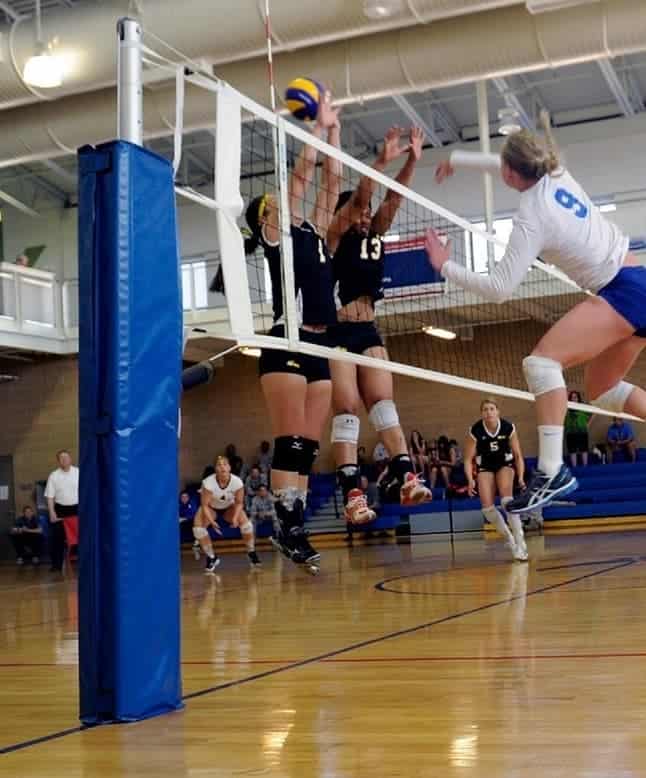
The team that is blocking is also getting ready to dig up the ball, and transition from defense into their own offensive play. That’s why a pass (or bump) is often one of the most important touches. Without a good pass, it’s really difficult to setup a good offensive attack. So, the better your team’s passing is, the more chances you’ll have to set up a variety of offensive plays.
What is a play?
When a team is planning their offensive attack, they can setup different types of hits to try to maximize their scoring potential. For every rotation, there is at least 2 or 3 hitters in the front court (depending on where the setter is). But don’t forget the backcourt hitters can also attack the ball, as long as they start their jump from behind the attack line.
Just as in football, a play in volleyball provides each of the hitters with a specific type of set that they’re going to receive. As you’ll see in the descriptions below, it’s important for the hitters to know what type of set they’re getting, because they’ll need to adjust the speed and location of their hit based on the play that was called for them.
Who calls the plays?
The setter usually calls the plays, as it’s the setter who decides which hitter is going to get the set. The setter is usually really aware of the strengths of their own hitters and can identify a good play to call based on the hitters’ strengths, and what they are comfortable hitting.
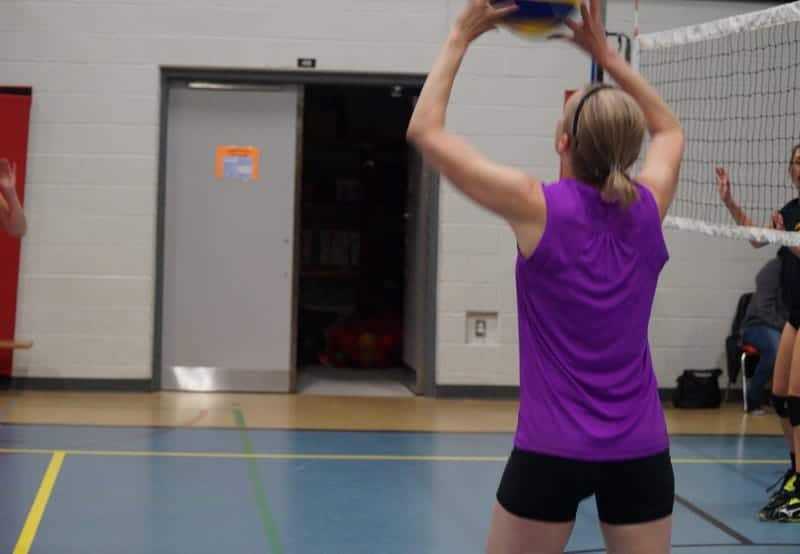
Another important factor in calling a specific play is the other team’s defensive setup. For example, there could be a really tall double-block, or there could be a slower middle blocker who is always late trying to block the outside hitters. Being aware of these kinds of details helps the setter decide what kind of plays to run, and which hitters to set to.
The setter will usually call the plays with hand signals to their teammates. There are some standard types of hand signals, and then some teams will make up their own. It doesn’t really matter what the hand signal is, as long as everyone is aware of what is being called.
There are tons of really complicated and sophisticated plays. However, a play doesn’t have to be complicated to be effective. It just has to outsmart the other team’s defense. That means that strategy, timing, and variety are key to running good plays.
Here are the 7 most basic plays that many teams start out with.
1. High ball or Four Set
Ahh, a classic high ball. Nope, I’m not referring to a cocktail! A high ball set, sometimes referred to as a four set, is the most basic offensive play in volleyball. This is a nice, easy, high set that goes to the power, or left-side, hitter.
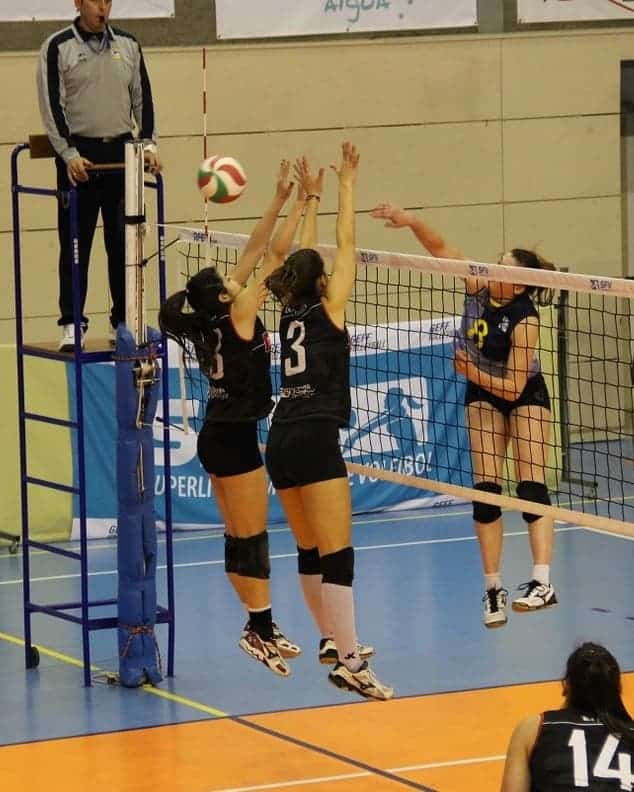
This is the type of set that hitters learn first. You’ll also see a lot of high ball sets in recreational leagues, as it’s the traditional type of set. It can also be a good set to use as a backup when you’ve tried to run a fancier type of play, but it’s gone awry. A high ball tends to be the go-to play, as well as the backup play.
A high ball set is often the type of set that you’ll probably get from one of the non-setter players. For example, if the first touch was a bad pass, and the setter can’t get to the ball so one of the other players steps in to set, they will usually set a high ball. This is because it’s one of the easiest sets, both for the person setting, and for the hitter.
How to do it:
Just as it sounds, a high ball should be set high enough so that the hitter has plenty of time to get their full hitting approach. Depending on the tempo of the game, it could be anywhere from 2 to 3 metres high at its peak. It should also be about a foot or so away from the net, so that the hitter has enough room to do a full arm swing without hitting the net.
Keeping the set off the net is also important so that the hitter doesn’t land underneath the net, which can increase the chances of ankle or knee injuries for either the hitter or the blockers.
A good practice to follow is that if the ball is accidentally set too close to the net, the setter should yell out “tight set” for the hitter, so that they can adjust their hitting approach. The hitter will be looking up at the ball, and maybe even the blockers, and may not be able to judge how close the set is to the net.
In terms of distance, a high ball should be set so that the hitter makes contact at the edge of the court, maybe about a ½ to a foot inside the court. That means because of the arc of the set, if a high ball set lands on the ground, it should actually land OUTSIDE the court. Some power hitters actually start their approach outside of the court.
When setting a high ball, it’s often helpful to use the antenna as a guide for distance and height. A good setter should be able to land a high ball set in the right spot from almost any spot on the court.
BONUS TIP: When learning how to hit a high ball, many players rush in much too quickly, leaving themselves just waiting for the ball to get there, and then they have no jumping momentum. Wait an extra second or two (this is tough to do!), and try to match your approach so that you’re meeting the ball when you jump.
Why it’s effective:
A high ball set is effective because most hitters know how to hit a high ball, and feel comfortable doing so. It also usually gives the hitter time to sneak a peek at the block and/or the defensive setup, and they can try to aim for any weak spots.
A good high ball set also gives the hitter the options, such as where to aim (ie, hitting down the line, or going cross court), or changing up by tipping or doing a roll shot.
2. Middle, or Two, set
Many players think that the difference between a high ball set and a set to the middle player is just where it lands. However, the middle set should actually be lower than a high ball set, anywhere between 1-2 metres high (depending on the height and preference of the hitter). You’re probably thinking that that doesn’t give the middle hitter enough time to do a full approach. And you’re right!

The reason the middle set should be a faster set, is because the middle on the opposing team is probably standing RIGHT THERE, ready to block the set. And if you set it nice and high, the blocker will have plenty of time to time their jump just right.
That’s why it’s important to call the play to the middle hitter, so that they’re ready for the set. While technically they should ALWAYS be ready for a set, giving them the heads up that they’re getting the next ball means they are mentally and physically ready for the set.
How to do it:
A middle set is actually one of the easiest sets to do, especially if the setter is in the right position. There’s not a lot of aiming required, because it’s set right in front of you. So, it’s basically setting the ball almost straight up, right in front of you.
An important thing to remember is that if the setter is NOT in the right position, they should still aim for the middle of the court, not right in front of where they happen to be. The middle hitter should be able to start their approach, and be confident the set will be coming to that middle spot every time.
A good middle hitter has to do a fast approach. Usually, however, middle players tend to be some of the tallest players, so they often are able to compensate for the lack of taking off power with their height. And with practice, many middle hitters are able to get a good jump, even without the full approach distance that the outside hitters have.
A middle hitter also has the advantage of being able to aim to either side of the court. While most middle hitters have a preference of aiming to the left or right, they should try to practice being able to hit either way, as it’s a great strategy to change this up every now and then.
Why it’s effective:
Because the middle hit is often faster, the other team’s defense may not be totally ready for the hit out of the middle. Also, as mentioned, middle hitters are often TALL, so if they’re up against a shorter blocker, they have a good chance of hitting right over the block.
3. Quick, or One, set
A quick is sometimes referred to as the money play – which explains why the hand signal is sometimes a “money money” sign. A quick is set to the middle hitter, and it’s super-fast. Timing is by far the most critical factor for a quick set. The middle hitter starts their approach before the setter even touches the ball, and the setter then sets the ball directly into the path of the middle’s hitting hand AS THEY ARE SWINGING.
If that sounds crazy, it’s not actually that bad. Yes, it’s difficult, but once you understand the timing, it’s actually a really fun play to run. There’s a lot of trust between the setter and the hitter, and the outcome is a really effective offensive attack.
How to do it:
A critical component of a quick set is that it actually starts with the pass. You need a pass that is right on target, because the setter needs to be in position to run the quick. The middle will start their approach, and the setter will just lightly set the ball about a foot or so directly in front of them, into the path of the hitter’s arm swing. The set should be aimed just slightly over the net, because the hitter will need the ball to be in front of their arm swing (otherwise the ball will just be aimed at the hitter’s head).
The middle needs to keep an eye on the setter and the ball the whole time, and trust that the set will be there. If it’s not a great set, the hitter has already committed to the hit, but they may be able to salvage the set with a tip or a roll shot.
Why it’s effective:
A quick set is effective because of its speed. Many blockers, especially more inexperienced ones, will have a hard time blocking a quick set because it’s already being hit as they’re realizing they should be jumping.
Even if it’s a really bad pass, and the setter chooses not to run the quick, the middle will have already started their approach. This is actually not a bad thing, because the middle should continue with their approach, to try to fake out the other middle blocker. This means that the middle blocker may still block the middle hitter, leaving the outside blockers to block on their own. So, even if it didn’t result in a set, just doing the approach for a quick set may be effective at weakening the other team’s defensive block.
4. Back set, or right-side set
This one is probably pretty self-explanatory, based on what it’s called. A back set is when the setter sets behind where they’re standing, to setup the right-side hitter. This is sometimes referred to as a five set.
How to do it:
A back set should be the same height as a high ball, giving the right-side player enough time to get a full approach. A good back set takes time to perfect, so you don’t usually see a back set from a non-setter player.
Because the setter is setting behind themselves, they don’t have the advantage of seeing the target, so it takes a lot of spatial awareness of the court. If the setter’s shoulders aren’t square to the target, they could end up setting the ball right over the net.
The technique is also a little different, so the setter needs to be comfortable with doing a back set. It involves pushing forward slightly with the hips, which adds a slight arch to the setter’s back.
Back sets tend to be a little less consistent than high ball sets, so right-side hitters often have to be readier with their approach. This is often challenging, because they tend to get fewer sets. That’s why it’s important to call a back set play, so that the right-side hitter is ready and expecting that set.
Why it’s effective:
As mentioned, since the setter needs to be comfortable and skilled at doing a back set, there tend to be fewer back sets. This means that the other team’s defense may not be as ready to block a hit from the right-side.
5. Shoot
A shoot set is a little trickier, but when it works, it’s a lot of fun to run. Timing is the secret to a good shoot set. Think of a shoot as a quick, but for the left-side (power) hitter. In terms of distance, it should make it to the outside of the court, just like a high-ball. But in terms of height, it’s only a few feet higher than the net.
Calling a shoot play in advance is necessary for a couple of reasons. First of all, the left-side player has to start their approach A LOT sooner than they would for a high ball. Pretty much as soon as the ball is leaving the setter’s hands. So they definitely need to know that the setter will be sending them a shoot set.
Secondly, remember above when I said that the high ball set is often the back up set for when a play goes awry? Well, if the left-side player has committed their approach to a shoot, they’re no longer able to hit a high ball instead. So, if the timing of the shoot play gets messed up, they’ll need to figure out if they can tip or roll shot instead.
Or if it REALLY got messed up, the backcourt player might have to bump it over! So they’ll need to be ready, too!
How to do it:
A shoot set is about timing and aim. It needs to be right on target, because the hitter will be jumping to meet the ball a lot faster than a traditional high ball set. And, since it’s a lot faster, the hitter doesn’t have a lot of time to adjust. As with a quick out of the middle, there’s a lot of trust between the setter and the hitter.
There isn’t as much arc to a shoot set, it’s more of a push to the outside. And did I mention it’s fast?
Why it’s effective:
Because of its speed, a shoot set is really difficult to block. Generally, it’s too fast of a set for the middle blocker to catch up to, so the outside blocker is often there on their own.
6. Slide
A slide play is a set for the middle hitter. But instead of hitting it in front of the setter, they actually hit it right behind the setter. This is definitely a play where the hitter and the setter need to be on the same page! If not, the ball will just bounce into empty space, with the hitter on the other side of the setter.
How to do it:
For the setter, this is actually a really easy ball to set. It’s similar to a regular two set in the middle, but instead of setting it in front, it’s set directly behind them. But, since it’s not set as far backwards as a back set to the right-side hitter, there’s very little arch to the back or push from the hips.
For the middle, this is a really fun hit, because they get to use a one-foot take off. The momentum for the jump comes from the sideways step, instead of the forward step. The middle does more of a diagonal approach, plants their left foot, then jumps in the air to swing, kind of hooking their right leg for more momentum.
Why it’s effective:
Because the middle blocker is probably not expecting this set, they will have already committed their jump to the usual location for a meter ball. So there’s a really good chance that there will be no blocker!
BONUS TIP: One thing to keep in mind with a slide play is to make sure the right-side hitter is aware it’s been called. Better yet, run it when the setter is in the front court, and there is no hitter behind them. If the right-side hitter isn’t aware the set is for a slide, they might think it’s just a really bad back set, and try to hit it themselves. And you definitely don’t want two players trying to hit the same ball!
7. Back court set
When you’re in the backcourt, don’t assume that all sets will be going to the front court players! Beginner players often forget that backcourt players are also allowed to hit the ball, they just have to start their jump from behind the attack line (but they can land in the front court).
Being able to hit a backcourt set is a great back up play for when there’s a bad pass. Or, it’s also a good changeup play, for times when the frontcourt players are having trouble scoring, and the setter wants to just change up the play.
How to do it:
You’re probably starting to see a trend here, but as with most of the plays above, hitting a backcourt set is really about timing. The set will likely be quite high, so definitely don’t rush your approach. The hitter should wait to see where the set is targeting, and determine from its height when to start their approach. This takes practice, but is a great skill to develop.
The target isn’t quite as exact as with the other types of sets, but there are three zones in the back court, and the set will be in one of these three zones. The set should aim for just in front of the attack line, so that the player can take off behind the attack line but make contact at or in front of the attack line.
The approach for a back court hit is the same as for a high ball, except it probably won’t have the same downwards trajectory as when it’s hit right at the net (depending on the player’s height).
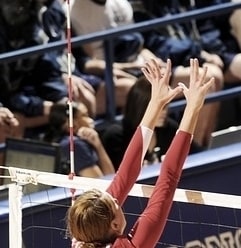
BONUS TIP: Keep an eye on the block! Some blockers, when they see there’s no front court hit, will back away from the net early to get into hitting position. However, some (more experienced) blockers will wait it out, and may still be in position to block a back court hit. So, when you’re hitting from the back court, don’t assume you have a wide open net. Take a quick look to see if you have any blockers, and either hit around or over them.
Why it’s effective:
When there’s a bad pass and the setter has to move way out of position to get the second ball, they have fewer setting options. Many times, it seems like instead of running a hitting attack, the team may have to just send over a “free ball” (a bump or volley over the net). However, if the back court players are ready for a set, the team can still get an offensive hit over the net.
While there are tons more sophisticated plays that can be run in volleyball, they require really precise passing, setting, and hitting skills. However, that doesn’t mean that only elite volleyball teams can be running plays! Even beginner and recreational teams can have fun incorporating plays into their offensive strategy. It’s fun to try a new play every now and then – and it’s even better when that play scores the point!
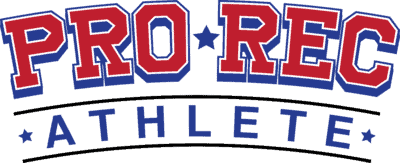

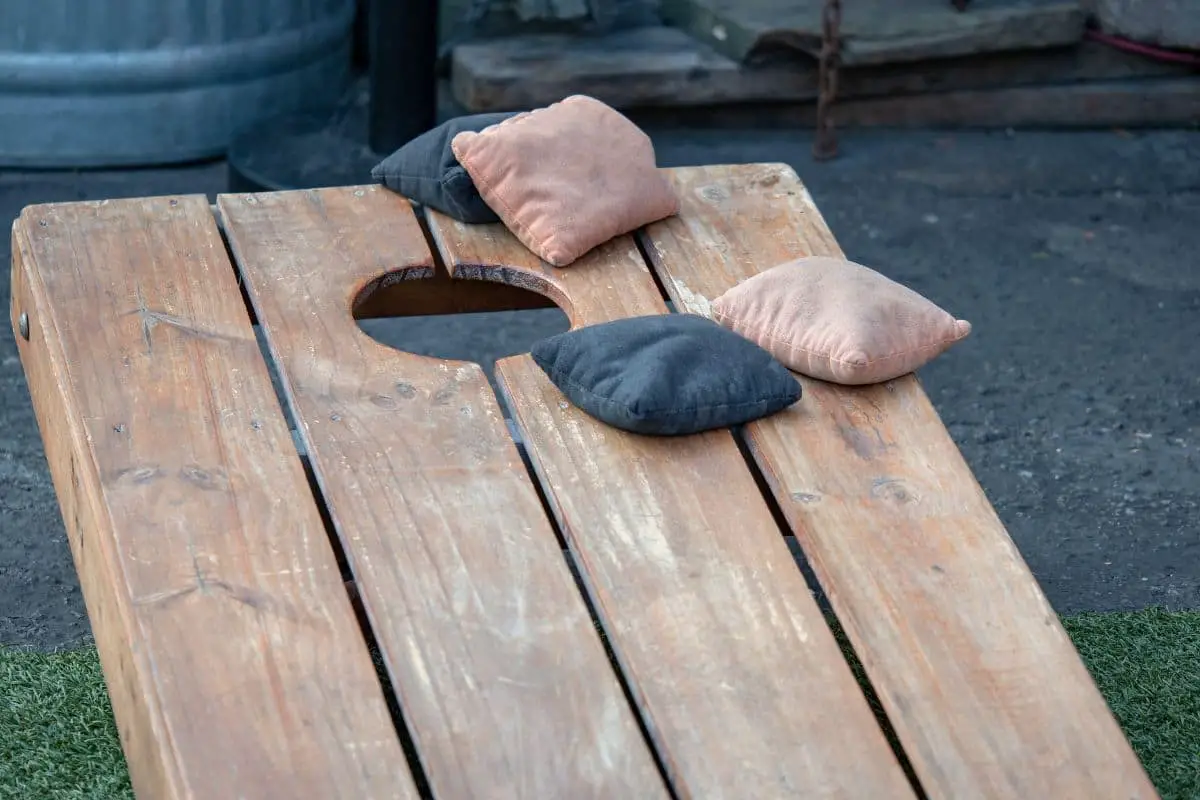
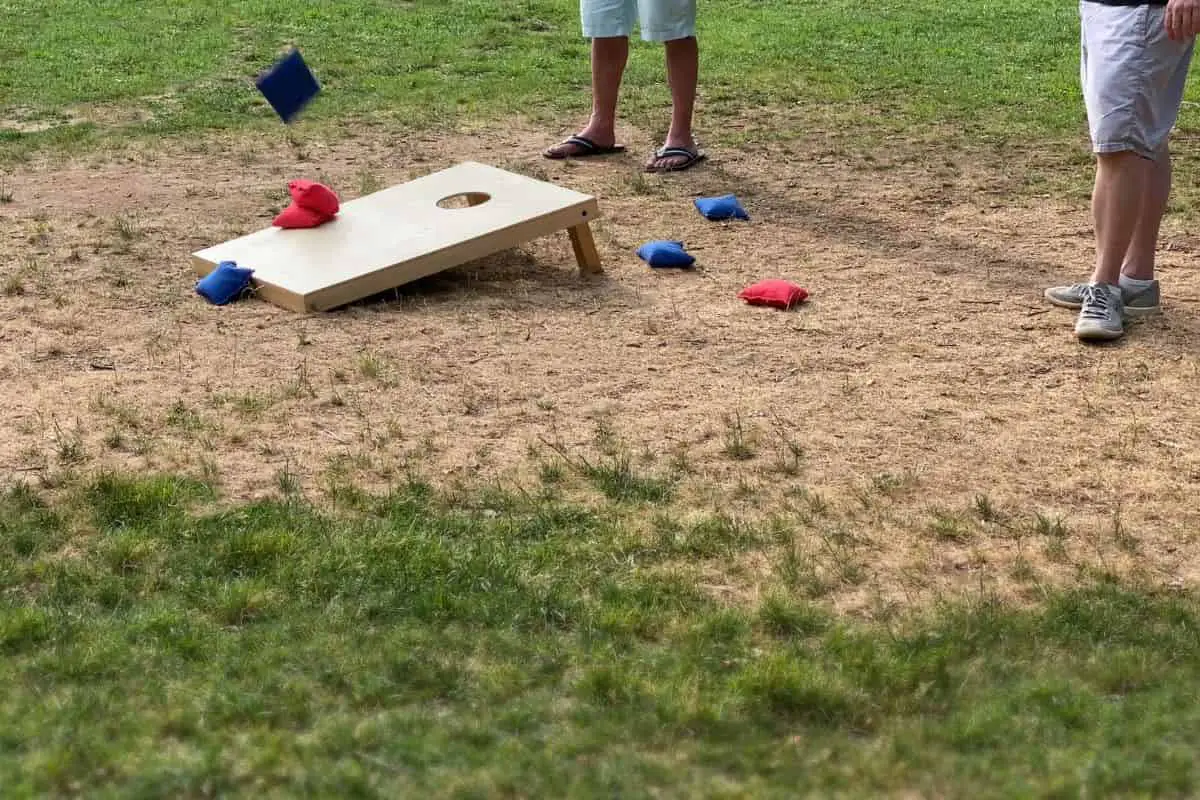
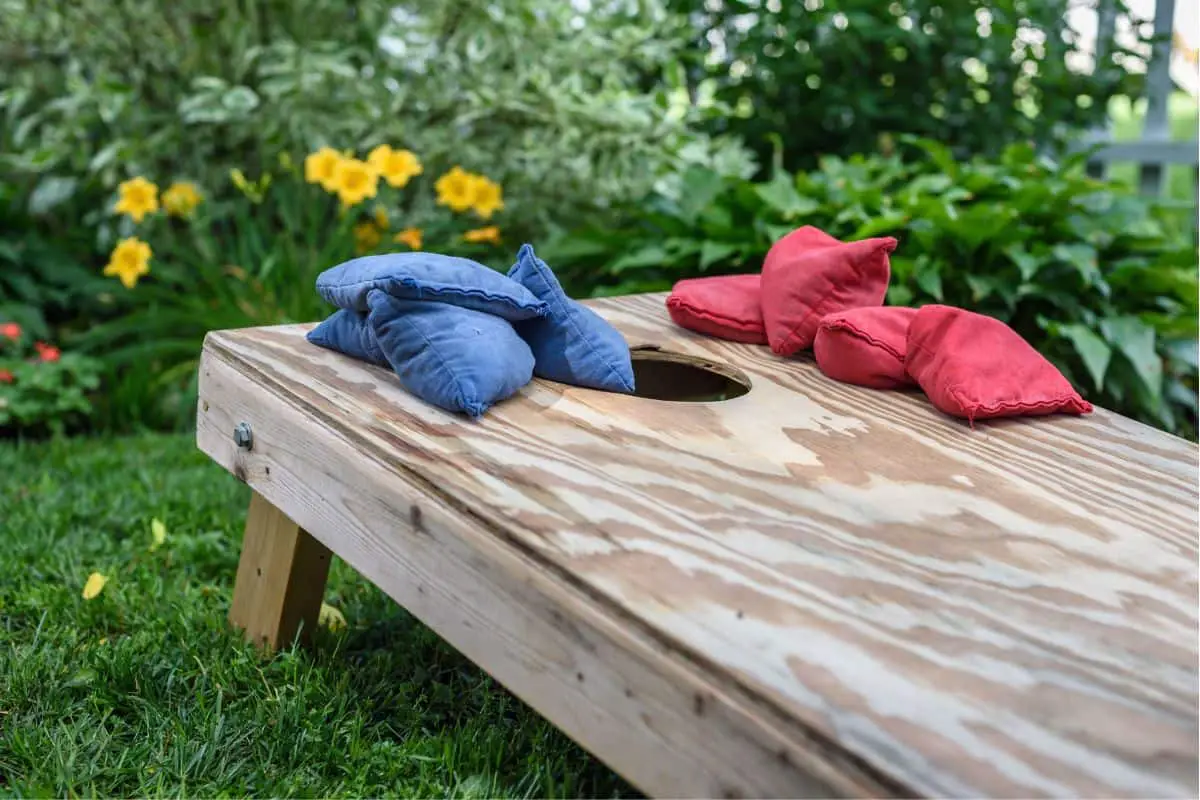

Leave a Reply